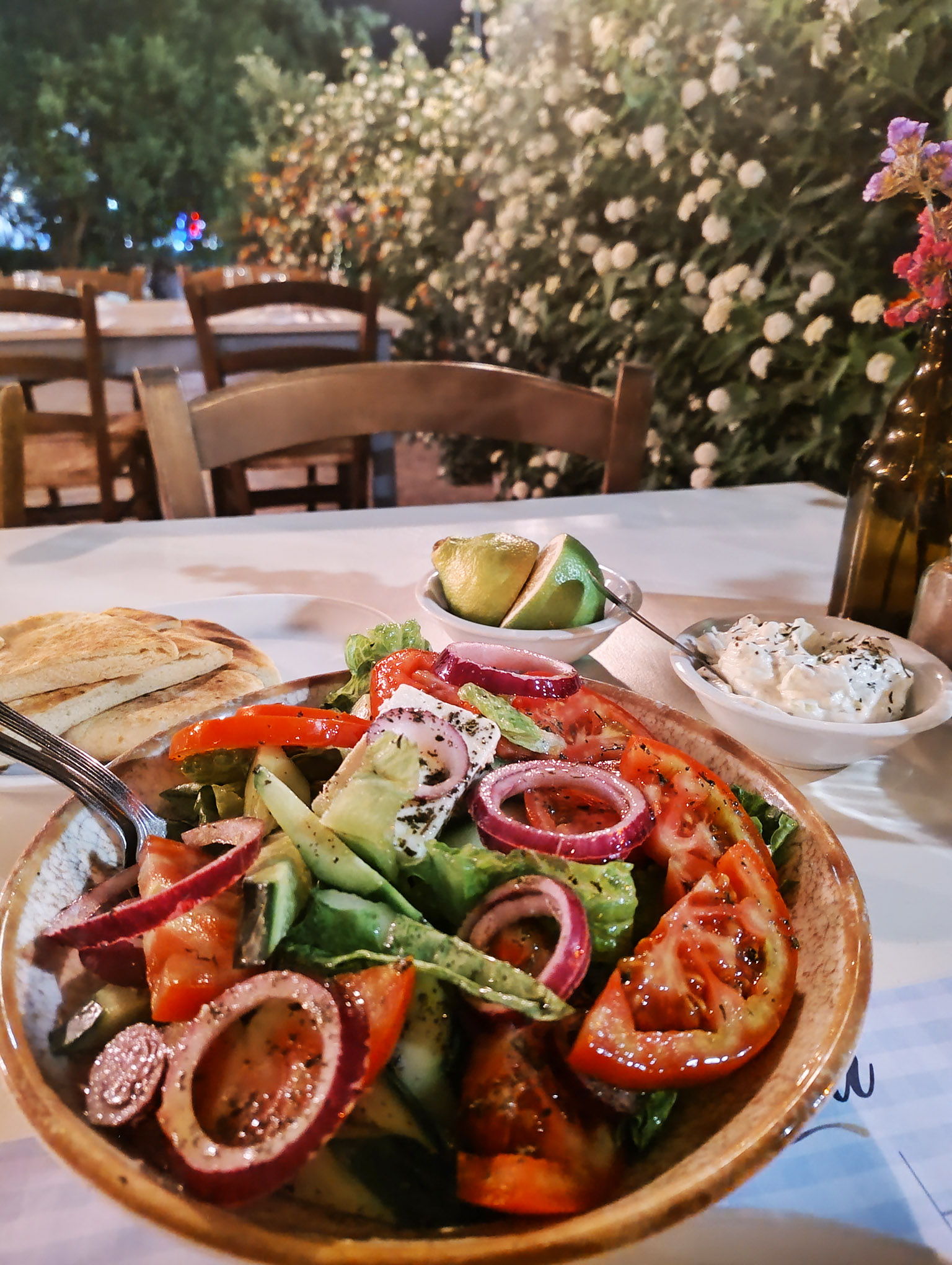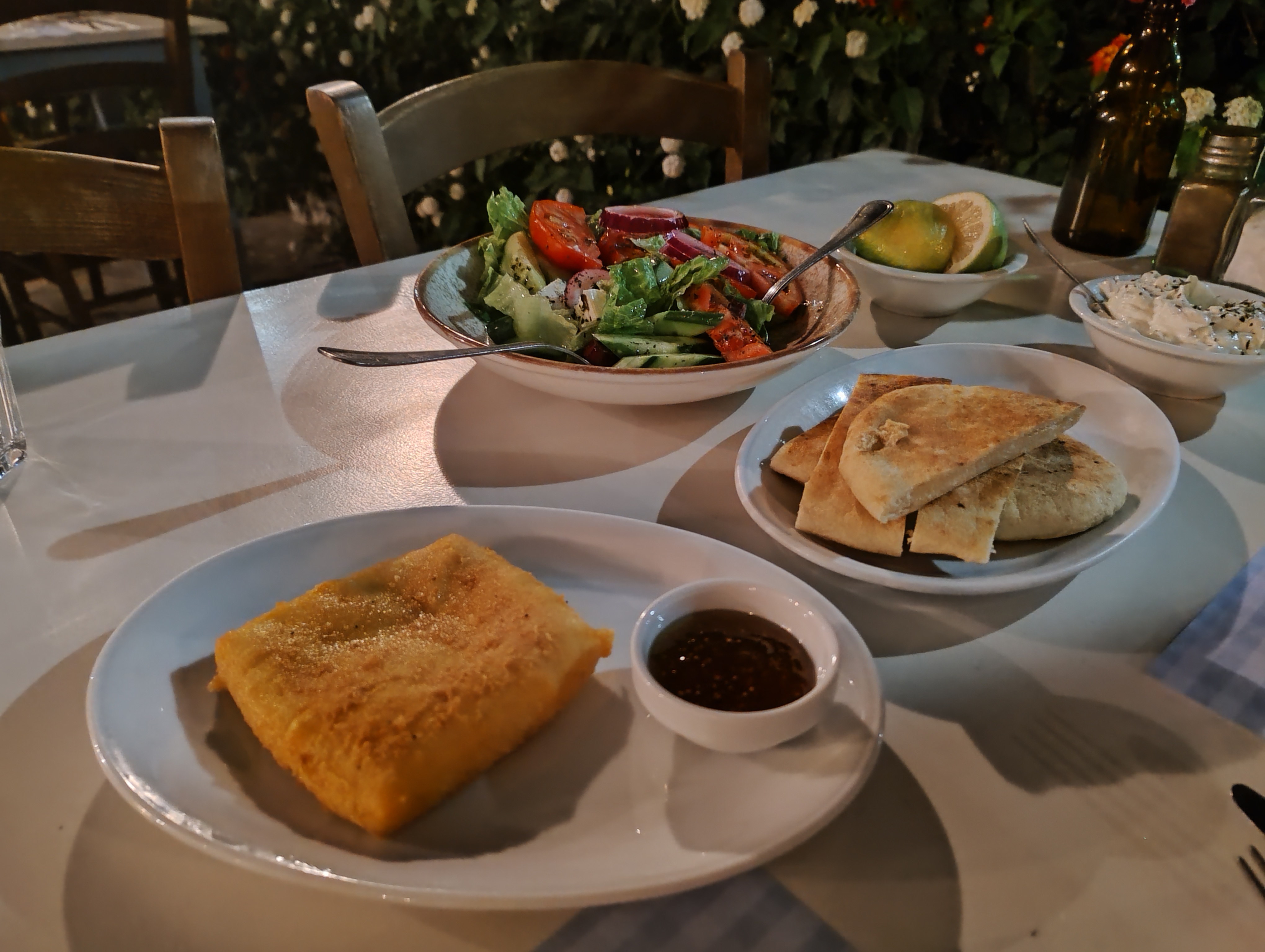Local cuisine worth getting curious about
In my eagerness to explore the novel, the obscure, the ethnic I’d somehow overlooked the most obvious choice: the local taverna.
You know, places that are meant to be deeply local affairs – places where you’re frequently greeted by name, places that live and die by the quality of the food, the warmth of the service, and the prices. Places where word-of-mouth keeps the kitchen running, not marketing budgets.
That’s why it felt so uncanny when a colleague recommended Stou Rousha, a taverna that – at least in practice – functions like a chain. He suggested the Larnaca seafront location. When I told him I couldn’t do Larnaca, he immediately recommended their Ayios Dhometios branch in Nicosia instead.
I was skeptical. The very nature of chain restaurants is uniformity, predictability and high customer turnover – none of which I want in a taverna experience.
But when I asked my faithful dining companion if she’d heard of it, she told me she had – and had heard good things from several people. That was enough to give it the benefit of the doubt.
When we pull up to the restaurant, we’re both pleasantly surprised to find a small dedicated parking lot – hardly a given in Nicosia.
Inside, the welcome is warm and low-key. We’re invited to sit wherever we like, and we choose the outdoor terrace. It’s a beautiful evening, and we’re curious to see what it’s like dining this close to a main road (spoiler: thanks to the leafy hedges encircling the space, you can barely hear the traffic, let alone see it).
Menus come in the form of paper placemats. The décor feels like a lived-in living room: mood lighting, a bookshelf dotted with trinkets, a vaguely familiar, cozy aesthetic that cafés have been leaning into for the better part of two decades. But here, it works. You could almost believe you’ve been invited to a family dinner.
That homely feeling is echoed in the menu.
The meze, Cyprus’ most ubiquitous dining format, is notably absent. For some, that might be a deal-breaker. For me, it’s almost a relief. Meze is the ultimate safe bet – but precisely because of that, it rarely surprises. Without it, the rest of the menu has room to breathe, to invite curiosity. You might actually order something you haven’t had before.
Another pleasant surprise: a dedicated vegan section. Not an apologetic afterthought, but actual dishes that might tempt a meat-eater to reconsider their order.
When the drinks arrive, we place our order: a small village salad, tzatziki, kefalotyri saganaki, a mixed chicken grill for my faithful dining companion, and for me, fresh, traditional, handmade ravioli with halloumi.

Soon enough, the salad and starters arrive. The salad is delicately seasoned in a way that allows the vegetables to shine. And unlike the usual careless quartered tomatoes, half-cucumbers, stray onions and token slab of feta, the presentation here feels thoughtful.
The tzatziki is, to use an oxymoron, refreshingly pungent. They’ve clearly gone heavy on the garlic – and I, for one, welcome it. The yoghurt is tangy, the cucumber fresh, and the overall effect is bold but not overwhelming.
But the runaway star of the starters is the kefalotyri saganaki – a hard, salty cheese lightly dusted with flour, then fried to form a golden-brown crust. Its crispy exterior contrasts beautifully with the gooey interior, and with a squeeze of lemon for brightness and balance, it disappears in seconds.
Time for the mains.
The mixed chicken grill arrived with two sheftalia and two skewers of chicken souvlaki. For many locals, the quality of a restaurant’s sheftalia is one of its true tests – both of the meat itself and the kitchen’s ability to handle it. These passed with flying colours: tender and juicy, with the caul fat adding a subtle richness. Grilling over an open flame gave them a gentle smokiness and just the right hint of char.
The souvlaki skewers were a standout. Perfectly seasoned, nicely cooked, but what really elevated them was a clever detail: alternating chunks of chicken breast and thigh. The breast offered clean, lean bites, while the thigh brought deeper flavour and softness – the contrast made the dish far more interesting than your standard skewer.
Then, the ravioli.
I’ll admit, I cynically expected the dish would consist of five small pieces on a large plate, arranged in some pretentious fashion to disguise a meagre portion.
I couldn’t have been more wrong.
To call the serving generous would be an understatement. The plate looked like a snow-dusted winter landscape, each halloumi-stuffed ravioli like a gentle hill, topped with a crumble of anari cheese. One bite in, and the dough all but dissolved – delicate, fresh, giving way to the warm, salty halloumi inside.
A dish this simple had no business being this exciting, this nuanced and flavourful.
Tradition doesn’t have to mean repetition. A good taverna proves that the familiar can still surprise you. All it takes is a little curiosity.
VITAL STATISTICS
SPECIALTY: Cyprus cuisine
WHERE: Stou Rousha, Demokratias 31A, Ayios Dhometios, Nicosia
WHEN: Daily 1-11pm
CONTACT: 70088848
HOW MUCH: €3 – €9 for starters, €8 – €17 for mains







Click here to change your cookie preferences